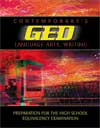| 1 | 2 | 3 | 4 |
| Inadequate | Marginal | Adequate | Effective |
| Reader has difficulty identifying or following the writer’s ideas. | Reader occasionally has difficulty understanding or following the writer’s ideas. | Reader understands writer’s ideas. | Reader understands and easily follows the writer’s expression of ideas. |
| Response to the Prompt | Attempts to address prompt but with little or no success in establishing a focus. | Addresses the prompt, though the focus may shift. | Uses the writing prompt to establish a main idea. | Presents a clearly focused main idea that addresses the prompt. |
| Organization | Fails to organize ideas. | Shows some evidence of an organizational plan. | Uses an identifiable organizational plan. | Establishes a clear and logical organization. |
| Development and Details | Demonstrates little or no development; usually lacks details or examples or presents irrelevant information. | Has some development but lacks specific details; may be limited to a listing, repetitions, or generalizations. | Has focused but occasionally uneven development; incorporates some specific detail. | Achieves coherent development with specific and relevant details and examples. |
| Conventions of EAE | Exhibits minimal or no control of sentence structure and the conventions of EAE (Edited American English). | Demonstrates inconsistent control of sentence structure and the conventions of EAE. | Generally controls sentence structure and the conventions of EAE. | Consistently controls sentence structure and the conventions of EAE.
|
| Word Choice | Exhibits weak and/or inappropriate words. | Exhibits a narrow range of word choice, often including inappropriate selections. | Exhibits appropriate word choice. | Exhibits varied and precise word choice.
|



 2002 McGraw-Hill Higher Education
2002 McGraw-Hill Higher Education